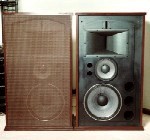Hi Robert
You cannot use multiple standard inductors simulate a tapped inductor. A tapped inductor acts like a transformer. And since, there are not separate primary and secondary winding, these devices are often referred to as Autoformers or Autotransformers. I don’t know of anyone that is manufacturing these devices, so unless you can track down some JBL crossovers. You might need to wind your own coils, which is not something that should be attempted without test equipment to measure the inductance.
And due to the necessary inductive interaction between taps, I would recommend using an iron core rather than an air core design. Rewinding an Erse Super Q coil would be a good starting point for such a project.
Here is a link to the inductance ratios that would be needed:
http://www.audioheritage.org/vbullet...hread.php?5376
...
Baron030






 Reply With Quote
Reply With Quote






